18 August 2023
Disruptive space tech, SpaceX dominance and final laps in Moon race - Space News Roundup
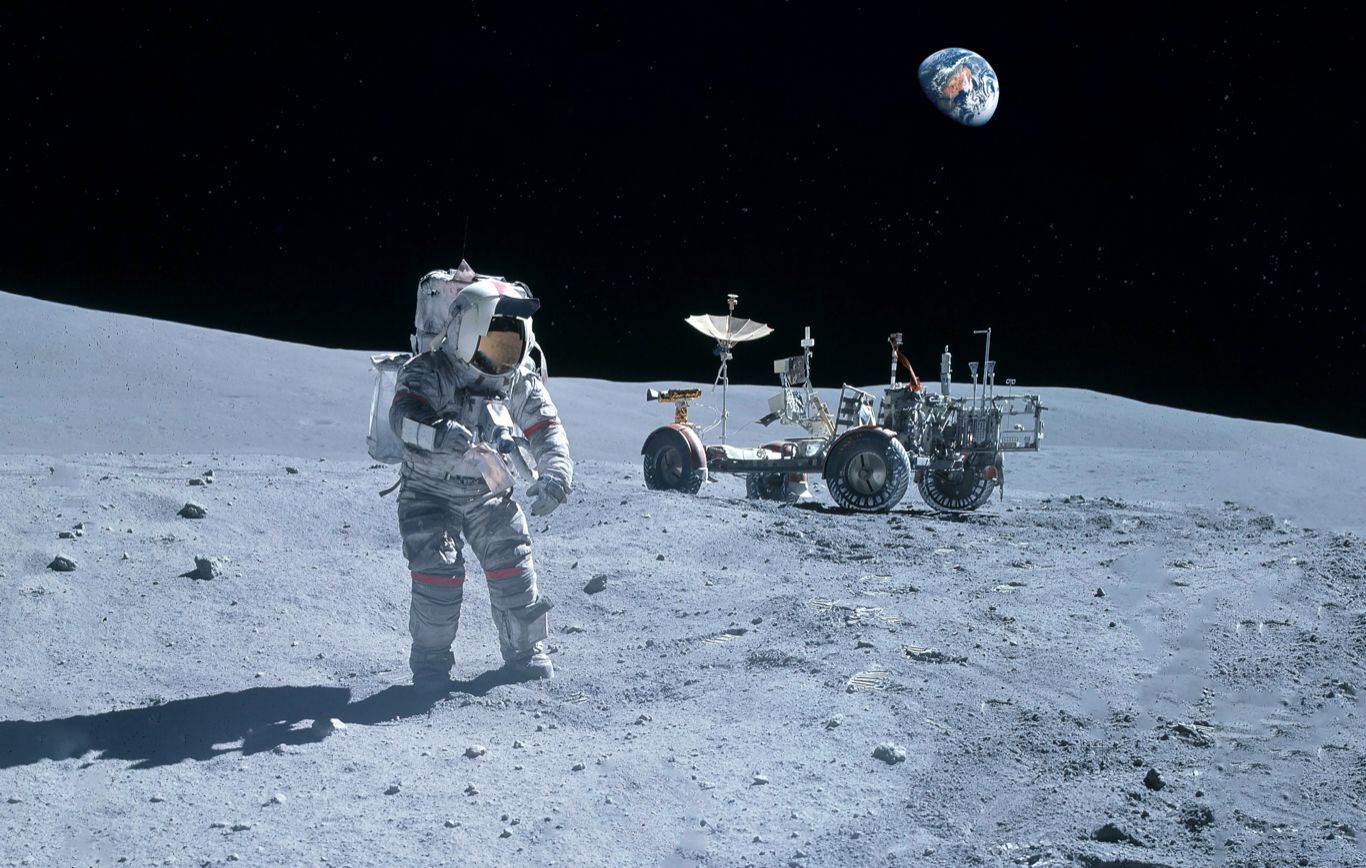
(Image: Adobe)
Innovative and destruptive space technology isn’t anything new, but has taken a sharp rise in recent years. From communications and imaging, demonstrated in the Ukraine crisis, to the promise of space-based solar power and direct-to-cell connectivity, space tech is quickly changing our lives’ on Earth.
German startup, DCUBED, are a company looking to join this march, with the demonstration of another disruptive technology, in-space manufacturing. Their upcoming demonstration will see the production of a 30cm high, 3D-printed truss, and moreover, the demo will prove the viability of such technology for the future production of larger structures in-orbit. In 2026 they also aim to demonstrate manufacturing SmallSat solar arrays in-orbit.
Also working in this area, Varda Space (US) carried out successful demo of their in-space manufacture of pharmaceuticals earlier this year, and in July announced they were waiting for an FAA licences to return the produce to Earth using their reentry module.
Direct-to-cell connectivity and AI for space safety
Interest in direct-to-handset satellite connectivity for new smartphone models is growing. Last week we read about Globalstar’s use of their satellite constellation to connect new iPhones for off-the-grid, emergency connectivity. AST SpaceMobile (US) have now announced that they have funded the development of the first five of their commercial satellites, to be used for direct-to-device connection. According to their CEO, Abel Avellan, they would need around 90 of their “BlueBird” satellites for its network, allowing users to remain connected beyond terrestrial grids.
AI technology is disrupting many sectors, and the space sector isn’t an exception. Last week we learnt of UK-based company, Vertical Space, exploring the use of AI for controlling and operating space-based vertical farms. This week the technology is also announced that the tech will be explored in the pursuit of space safety and sustainability. Also based in the UK, the University of Strathclyde has been awarded UK Space Agency Funding (as part of their recently announced International Bilateral Fund) to carry out work on their AI for Space Safety and Sustainability project, with the aim of establishing an International Institute on AI for Space Safety and Sustainability, designed to support and encourage the development of early stage AI applications in the space sector.
Additionally, US-based startup, Wallaroo Labs, has won government funding from the US Space Force to work on the development of machine learning models for edge computers in orbit. Edge computing brings devices closer to the source of data in order to increase efficiency, such as to a sensor in space. Machine learning using AI could improve the applications of in-orbit “robotics, refueling, and protecting satellites from space debris” according to Vid Jain, CEO of Wallaroo.
Virgin fly first commercial customers and SpaceX dominance goals
Since 2004 Richard Branson’s Virgin Galactic has promised to bring commercial tourism to the space sector. It’s not been an easy journey, facing competition from Blue Origin and SpaceX, and experiencing a tragically fatal accident in 2014.
However, last Thursday, the company carried out its second commercial flight to the edge of space, carrying its first commercial passengers; Keisha Schahaff, her 18-year-old daughter Anastasia Mayers and former olympian, Jon Goodwin. Furthermore, Virgin Galactic claim to have 800 customers lining up to take the journey into space.
However, one of Virgin’s failures has become the benefit of one of its rivals; New Zealand and US-based launch startup, Rocket Lab. The company successfully purchased Virgin Orbit’s California production facility (after they declared bankruptcy and selling its assets in May), and will now use it in order to scale-up production of its new, reusable launch vehicle, Neutron. Their newer rocket may hope to compete with SpaceX’s Falcon-9 and Blue Origin’s yet to launch New Glenn rocket.
Reusability has proven critical in reducing launch costs, increasing access to space and addressing sustainability issues, such as reducing orbital debris. Allied Market Research this week predicted the reusable launch market to grow by 10,3% between 2026 and 2035.
SpaceX dominance and NASA discuss crewed asteroid mission
Rocket Lab have truly made their mark in the industry, from launching NASA’s pathfinding CAPSTONE mission to the Moon last year, to developing its own mission to Venus. However, it still seems unclear how the dominance of SpaceX is going to challenged in the coming years.
In his recent post on X.com, Elon Musk said that SpaceX is tracking to lift 80% of all mass to orbit, China 10% and the rest of the world 10%, but adding that he doesn’t want to “jinx it”. In the second quarter of this year SpaceX have lifted nearly 10 times as much as their nearest rivals, China.
This is also not accounting for the introduction of their game-changing space vehicle, Starship, which took another step forwards this week after submitting a mishap investigation report to the FAA. According to ARS Technica, the report is a significant milestone as “… it signals SpaceX has completed its investigation into the Starship test launch on April 20".
The company may also play a key role in sending NASA astronauts to relay with an asteroid, discussed this week in an article from The Hill. The “Prospects for Future Human Space Flight Missions to Near-Earth Asteroids” idea goes back to the Obama administration, and in April this year the idea was published in a NASA paper, which can be found
here. SpaceX’s role would be send a crew to a near-Earth asteroid aboard a Starship space vehicle in 2039, where they would be taking samples and leaving behind robots.

SpaceX's Starship (Image: SpaceX)
Nations race to the Moon, explore potential applications
But perhaps a more pressing, before crew are sent to relay with asteroids, is the matter of lunar exploration. In recent months we have seen several key missions head to the Moon, and there are more to come. These missions are designed for multiple applications, including exploring the potential use of lunar resources.
China’s 2020 Chang’e-5 lunar mission achieved significant milestones for the growing nation, in successfully collecting and returning samples of lunar regolith. The samples were made available to Chinese research institutions, but have now been made available to the international community, perhaps also representing China’s urge to establish more international partnerships in space.
Understanding the makeup of lunar regolith plays a key role in knowing how to utilise local resources on the Moon, and establish a long-term presence. Working towards this aim, this week the US Defense Advanced Research Projects Agency (DARPA) has begun its study to “guide development of integrated lunar infrastructure over the next decade”, according to Space News.
Nations and companies prepare for arrival at the Moon
The drive to be part of our future on the Moon can really be witnessed at this moment in time, with several mission already launched, or due to be launched this year. Commercial lunar lander company, Intuitive Machines (US), announced this week that they have set November 15th as a potential launch date for their IM-1 mission, blasting off from the Kennedy Space Centre atop a Falcon-9. The company could set a milestone of their own, with the chance of becoming the first successful commercial lander mission on the Moon.
Japan will be heading off with their Smart Lander for Investigating Moon (SLIM) mission on August 26th. They aim to land two rovers on the Moon, and use facial recognition technology to automate the landing. The rovers include Lunar Excursion Vehicle 1 (LEV-1), a lunar hopper that will relay data back to Earth, and Lunar Excursion Vehicle 2 (LEV-2), a small 26 x 40 x 30 cm ball-shaped rover, which will carry two cameras.
NASA are also carrying on with their next Artemis launch, which will take astronauts around the Moon and back again, further than any humans have travelled before. This week they began moving the launch tower out for testing, and recently carried out demonstrations on the landing and retrieval of the Orion module.
Also this week, NASA’s Lunar Trailblazer has had its final payload integrated. The Lunar Thermal Mapper was provided by the University of Oxford in England, and will assist in the search for water on the Moon. The orbiter is due to launch in 2024 as part of Intuitive Machine’s IM-2 mission.
All eyes at the moment however are on the Luna-25 and Chandrayaan-3 landing missions sent by Russia and India, respectively. Heading off on July 14th, India mission took a longer trajectory and is due to land on August 23rd. This week the lander separation is due to take place, just 163 km from the Moon. Russia took a far more direct route, and last week entered lunar orbit, and are planning for a landing on Monday, August 21st.
The coming weeks and months are set to be an exciting time for lunar exploration.
External Links
This Week
*News articles posted here are not property of ANASDA GmbH and belong to their respected owners. Postings here are external links only.
Our future in space
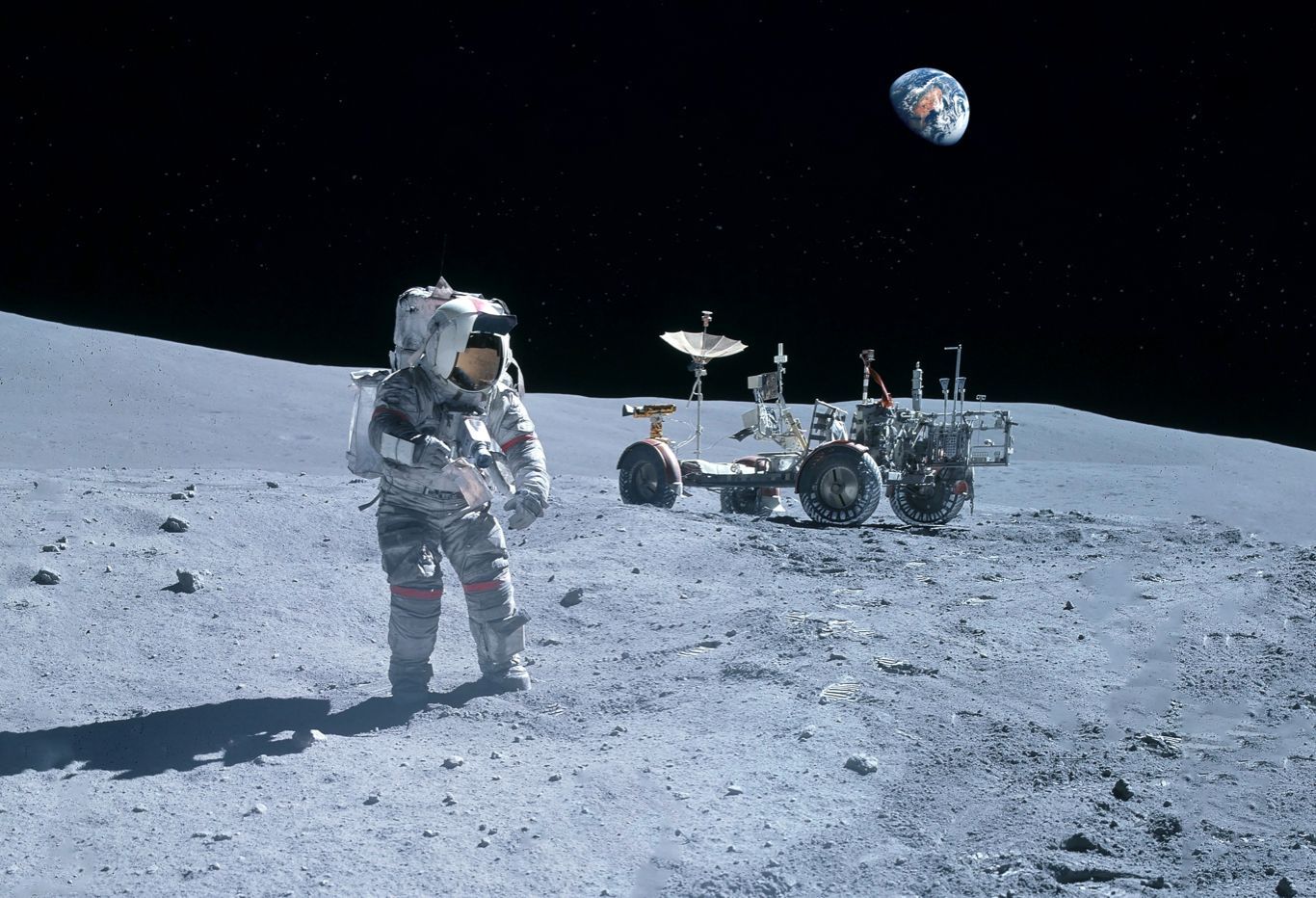
(Image: Adobe)
18 August 2023
Disruptive space tech, SpaceX dominance and final laps in Moon race - Space News Roundup
Innovative and destruptive space technology isn’t anything new, but has taken a sharp rise in recent years. From communications and imaging, demonstrated in the Ukraine crisis, to the promise of space-based solar power and direct-to-cell connectivity, space tech is quickly changing our lives’ on Earth.
Interestingly, the mission is due to arrive around the same time as the Indian Chandrayaan-3 mission, which set-off on July 14th and took a longer trajectory to the Moon. The mission this week entered lunar orbit and sent back its first images, and on August 23rd the Vikram lander will separate and begin its descent to the surface. India are aiming to be only the fourth nation to land on the Moon.
NASA have this week also be preparing for their flagship Artemis mission, with the practice recovery of a crewed module, part of the Artemis-2 mission next year. While not landing on the surface, Artemis-2 will send astronauts on the same trajectory as Artemis-1, around the Moon and back again, and presents a significant step towards establishing a sustained lunar presence in the near future.
German startup, DCUBED, are a company looking to join this march, with the demonstration of another disruptive technology, in-space manufacturing. Their upcoming demonstration will see the production of a 30cm high, 3D-printed truss, and moreover, the demo will prove the viability of such technology for the future production of larger structures in-orbit. In 2026 they also aim to demonstrate manufacturing SmallSat solar arrays in-orbit.
Also working in this area, Varda Space (US) carried out successful demo of their in-space manufacture of pharmaceuticals earlier this year, and in July announced they were waiting for an FAA licences to return the produce to Earth using their reentry module.
Direct-to-cell connectivity and AI for space safety
Interest in direct-to-handset satellite connectivity for new smartphone models is growing. Last week we read about Globalstar’s use of their satellite constellation to connect new iPhones for off-the-grid, emergency connectivity. AST SpaceMobile (US) have now announced that they have funded the development of the first five of their commercial satellites, to be used for direct-to-device connection. According to their CEO, Abel Avellan, they would need around 90 of their “BlueBird” satellites for its network, allowing users to remain connected beyond terrestrial grids.
AI technology is disrupting many sectors, and the space sector isn’t an exception. Last week we learnt of UK-based company, Vertical Space, exploring the use of AI for controlling and operating space-based vertical farms. This week the technology is also announced that the tech will be explored in the pursuit of space safety and sustainability. Also based in the UK, the University of Strathclyde has been awarded UK Space Agency Funding (as part of their recently announced International Bilateral Fund) to carry out work on their AI for Space Safety and Sustainability project, with the aim of establishing an International Institute on AI for Space Safety and Sustainability, designed to support and encourage the development of early stage AI applications in the space sector.
Additionally, US-based startup, Wallaroo Labs, has won government funding from the US Space Force to work on the development of machine learning models for edge computers in orbit. Edge computing brings devices closer to the source of data in order to increase efficiency, such as to a sensor in space. Machine learning using AI could improve the applications of in-orbit “robotics, refueling, and protecting satellites from space debris” according to Vid Jain, CEO of Wallaroo.
Virgin fly first commercial customers and SpaceX dominance goals
Since 2004 Richard Branson’s Virgin Galactic has promised to bring commercial tourism to the space sector. It’s not been an easy journey, facing competition from Blue Origin and SpaceX, and experiencing a tragically fatal accident in 2014.
However, last Thursday, the company carried out its second commercial flight to the edge of space, carrying its first commercial passengers; Keisha Schahaff, her 18-year-old daughter Anastasia Mayers and former olympian, Jon Goodwin. Furthermore, Virgin Galactic claim to have 800 customers lining up to take the journey into space.
However, one of Virgin’s failures has become the benefit of one of its rivals; New Zealand and US-based launch startup, Rocket Lab. The company successfully purchased Virgin Orbit’s California production facility (after they declared bankruptcy and selling its assets in May), and will now use it in order to scale-up production of its new, reusable launch vehicle, Neutron. Their newer rocket may hope to compete with SpaceX’s Falcon-9 and Blue Origin’s yet to launch New Glenn rocket.
Reusability has proven critical in reducing launch costs, increasing access to space and addressing sustainability issues, such as reducing orbital debris. Allied Market Research this week predicted the reusable launch market to grow by 10,3% between 2026 and 2035.
SpaceX dominance and NASA discuss crewed asteroid mission
Rocket Lab have truly made their mark in the industry, from launching NASA’s pathfinding CAPSTONE mission to the Moon last year, to developing its own mission to Venus. However, it still seems unclear how the dominance of SpaceX is going to challenged in the coming years.
In his recent post on X.com, Elon Musk said that SpaceX is tracking to lift 80% of all mass to orbit, China 10% and the rest of the world 10%, but adding that he doesn’t want to “jinx it”. In the second quarter of this year SpaceX have lifted nearly 10 times as much as their nearest rivals, China.
This is also not accounting for the introduction of their game-changing space vehicle, Starship, which took another step forwards this week after submitting a mishap investigation report to the FAA. According to ARS Technica, the report is a significant milestone as “… it signals SpaceX has completed its investigation into the Starship test launch on April 20".
The company may also play a key role in sending NASA astronauts to relay with an asteroid, discussed this week in an article from The Hill. The “Prospects for Future Human Space Flight Missions to Near-Earth Asteroids” idea goes back to the Obama administration, and in April this year the idea was published in a NASA paper, which can be found
here. SpaceX’s role would be send a crew to a near-Earth asteroid aboard a Starship space vehicle in 2039, where they would be taking samples and leaving behind robots.
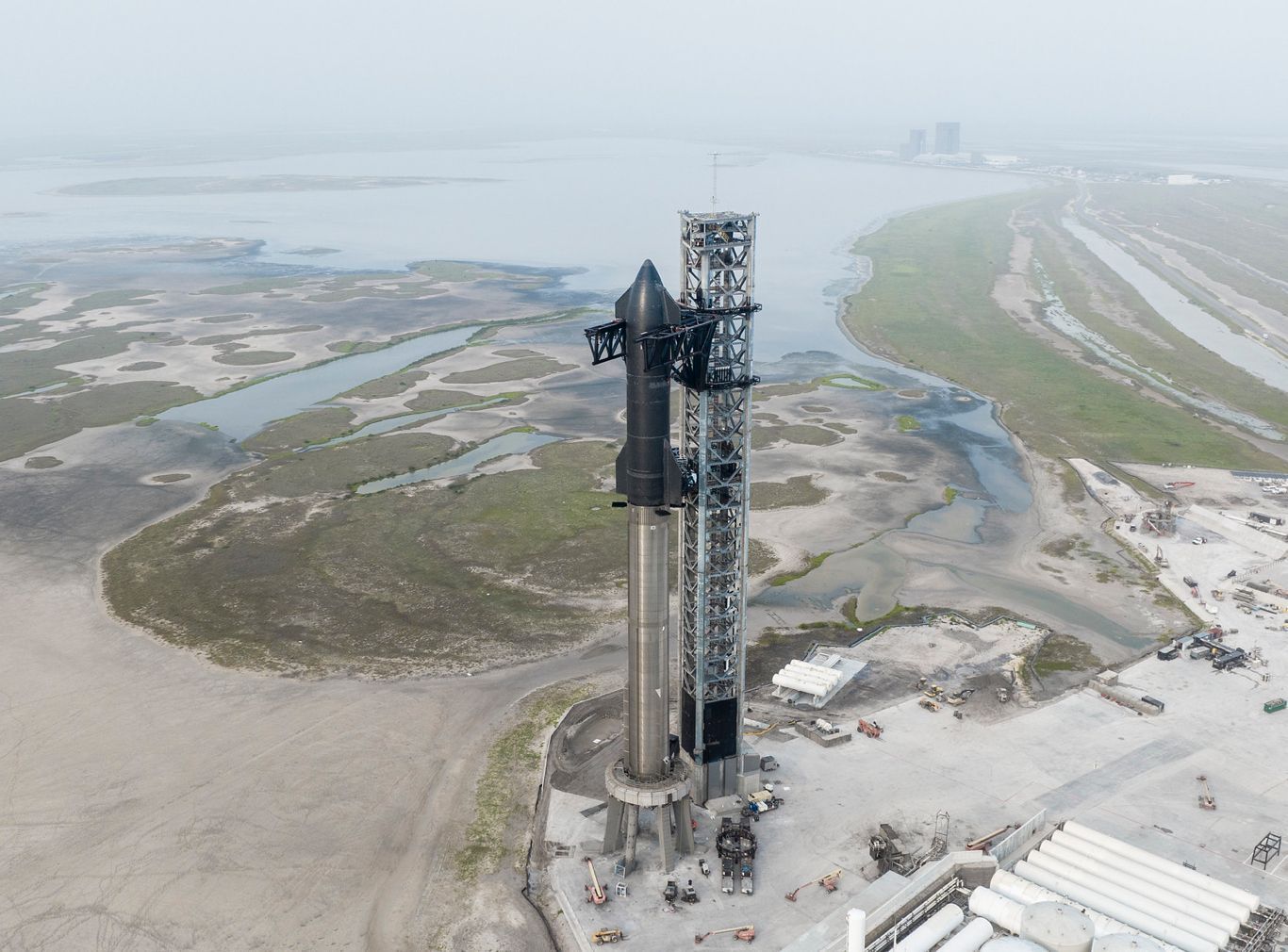
SpaceX's Starship (Image: SpaceX)
Nations race to the Moon, explore potential applications
But perhaps a more pressing, before crew are sent to relay with asteroids, is the matter of lunar exploration. In recent months we have seen several key missions head to the Moon, and there are more to come. These missions are designed for multiple applications, including exploring the potential use of lunar resources.
China’s 2020 Chang’e-5 lunar mission achieved significant milestones for the growing nation, in successfully collecting and returning samples of lunar regolith. The samples were made available to Chinese research institutions, but have now been made available to the international community, perhaps also representing China’s urge to establish more international partnerships in space.
Understanding the makeup of lunar regolith plays a key role in knowing how to utilise local resources on the Moon, and establish a long-term presence. Working towards this aim, this week the US Defense Advanced Research Projects Agency (DARPA) has begun its study to “guide development of integrated lunar infrastructure over the next decade”, according to Space News.
Nations and companies prepare for arrival at the Moon
The drive to be part of our future on the Moon can really be witnessed at this moment in time, with several mission already launched, or due to be launched this year. Commercial lunar lander company, Intuitive Machines (US), announced this week that they have set November 15th as a potential launch date for their IM-1 mission, blasting off from the Kennedy Space Centre atop a Falcon-9. The company could set a milestone of their own, with the chance of becoming the first successful commercial lander mission on the Moon.
Japan will be heading off with their Smart Lander for Investigating Moon (SLIM) mission on August 26th. They aim to land two rovers on the Moon, and use facial recognition technology to automate the landing. The rovers include Lunar Excursion Vehicle 1 (LEV-1), a lunar hopper that will relay data back to Earth, and Lunar Excursion Vehicle 2 (LEV-2), a small 26 x 40 x 30 cm ball-shaped rover, which will carry two cameras.
NASA are also carrying on with their next Artemis launch, which will take astronauts around the Moon and back again, further than any humans have travelled before. This week they began moving the launch tower out for testing, and recently carried out demonstrations on the landing and retrieval of the Orion module.
Also this week, NASA’s Lunar Trailblazer has had its final payload integrated. The Lunar Thermal Mapper was provided by the University of Oxford in England, and will assist in the search for water on the Moon. The orbiter is due to launch in 2024 as part of Intuitive Machine’s IM-2 mission.
All eyes at the moment however are on the Luna-25 and Chandrayaan-3 landing missions sent by Russia and India, respectively. Heading off on July 14th, India mission took a longer trajectory and is due to land on August 23rd. This week the lander separation is due to take place, just 163 km from the Moon. Russia took a far more direct route, and last week entered lunar orbit, and are planning for a landing on Monday, August 21st.
The coming weeks and months are set to be an exciting time for lunar exploration.
Share this article
External Links
This Week
*News articles posted here are not property of ANASDA GmbH and belong to their respected owners. Postings here are external links only.
18 August 2023
Disruptive space tech, SpaceX dominance and final laps in Moon race - Space News Roundup
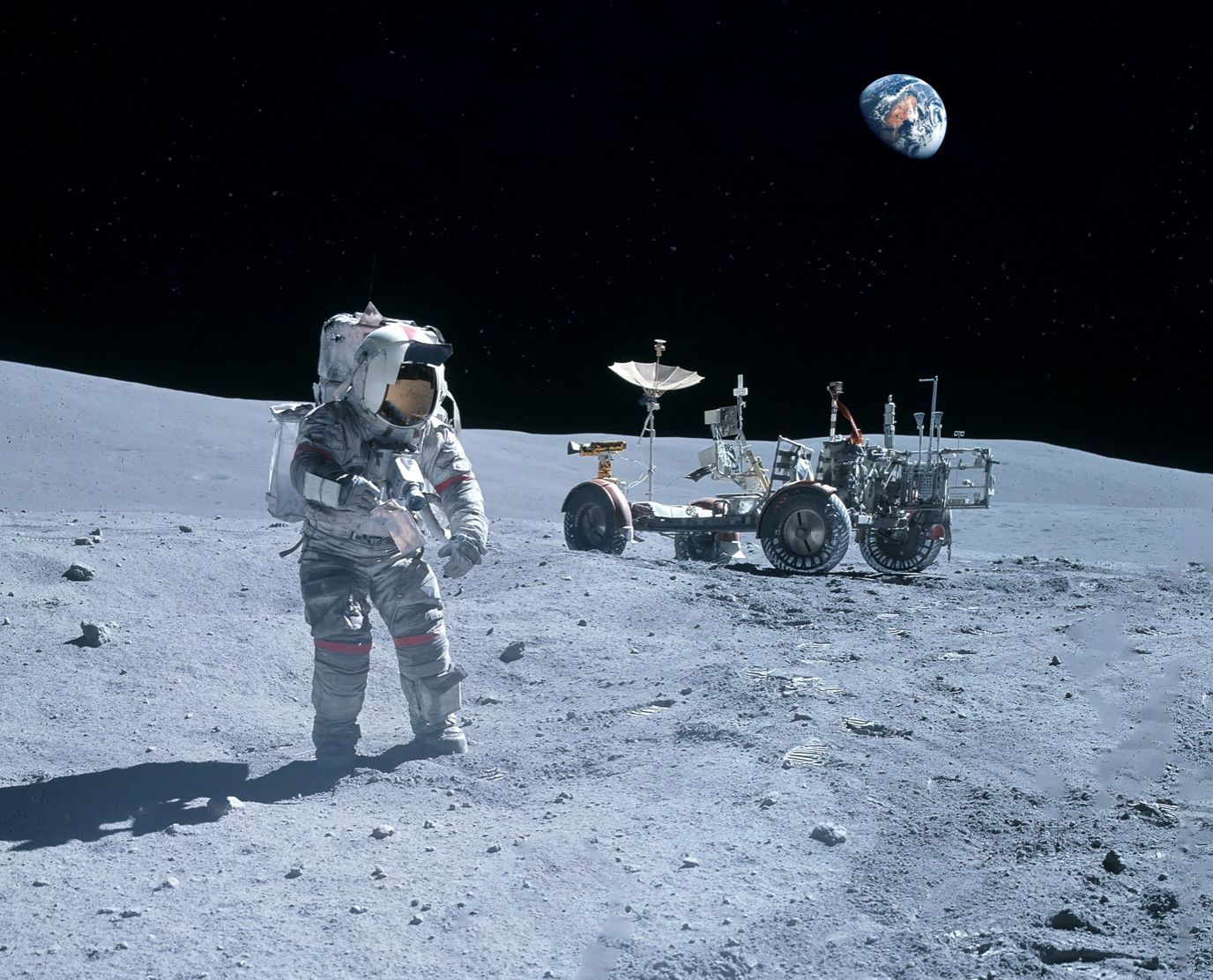
(Image: Adobe)
Innovative and destruptive space technology isn’t anything new, but has taken a sharp rise in recent years. From communications and imaging, demonstrated in the Ukraine crisis, to the promise of space-based solar power and direct-to-cell connectivity, space tech is quickly changing our lives’ on Earth.
German startup, DCUBED, are a company looking to join this march, with the demonstration of another disruptive technology, in-space manufacturing. Their upcoming demonstration will see the production of a 30cm high, 3D-printed truss, and moreover, the demo will prove the viability of such technology for the future production of larger structures in-orbit. In 2026 they also aim to demonstrate manufacturing SmallSat solar arrays in-orbit.
Also working in this area, Varda Space (US) carried out successful demo of their in-space manufacture of pharmaceuticals earlier this year, and in July announced they were waiting for an FAA licences to return the produce to Earth using their reentry module.
Direct-to-cell connectivity and AI for space safety
Interest in direct-to-handset satellite connectivity for new smartphone models is growing. Last week we read about Globalstar’s use of their satellite constellation to connect new iPhones for off-the-grid, emergency connectivity. AST SpaceMobile (US) have now announced that they have funded the development of the first five of their commercial satellites, to be used for direct-to-device connection. According to their CEO, Abel Avellan, they would need around 90 of their “BlueBird” satellites for its network, allowing users to remain connected beyond terrestrial grids.
AI technology is disrupting many sectors, and the space sector isn’t an exception. Last week we learnt of UK-based company, Vertical Space, exploring the use of AI for controlling and operating space-based vertical farms. This week the technology is also announced that the tech will be explored in the pursuit of space safety and sustainability. Also based in the UK, the University of Strathclyde has been awarded UK Space Agency Funding (as part of their recently announced International Bilateral Fund) to carry out work on their AI for Space Safety and Sustainability project, with the aim of establishing an International Institute on AI for Space Safety and Sustainability, designed to support and encourage the development of early stage AI applications in the space sector.
Additionally, US-based startup, Wallaroo Labs, has won government funding from the US Space Force to work on the development of machine learning models for edge computers in orbit. Edge computing brings devices closer to the source of data in order to increase efficiency, such as to a sensor in space. Machine learning using AI could improve the applications of in-orbit “robotics, refueling, and protecting satellites from space debris” according to Vid Jain, CEO of Wallaroo.
Virgin fly first commercial customers and SpaceX dominance goals
Since 2004 Richard Branson’s Virgin Galactic has promised to bring commercial tourism to the space sector. It’s not been an easy journey, facing competition from Blue Origin and SpaceX, and experiencing a tragically fatal accident in 2014.
However, last Thursday, the company carried out its second commercial flight to the edge of space, carrying its first commercial passengers; Keisha Schahaff, her 18-year-old daughter Anastasia Mayers and former olympian, Jon Goodwin. Furthermore, Virgin Galactic claim to have 800 customers lining up to take the journey into space.
However, one of Virgin’s failures has become the benefit of one of its rivals; New Zealand and US-based launch startup, Rocket Lab. The company successfully purchased Virgin Orbit’s California production facility (after they declared bankruptcy and selling its assets in May), and will now use it in order to scale-up production of its new, reusable launch vehicle, Neutron. Their newer rocket may hope to compete with SpaceX’s Falcon-9 and Blue Origin’s yet to launch New Glenn rocket.
Reusability has proven critical in reducing launch costs, increasing access to space and addressing sustainability issues, such as reducing orbital debris. Allied Market Research this week predicted the reusable launch market to grow by 10,3% between 2026 and 2035.
SpaceX dominance and NASA discuss crewed asteroid mission
Rocket Lab have truly made their mark in the industry, from launching NASA’s pathfinding CAPSTONE mission to the Moon last year, to developing its own mission to Venus. However, it still seems unclear how the dominance of SpaceX is going to challenged in the coming years.
In his recent post on X.com, Elon Musk said that SpaceX is tracking to lift 80% of all mass to orbit, China 10% and the rest of the world 10%, but adding that he doesn’t want to “jinx it”. In the second quarter of this year SpaceX have lifted nearly 10 times as much as their nearest rivals, China.
This is also not accounting for the introduction of their game-changing space vehicle, Starship, which took another step forwards this week after submitting a mishap investigation report to the FAA. According to ARS Technica, the report is a significant milestone as “… it signals SpaceX has completed its investigation into the Starship test launch on April 20".
The company may also play a key role in sending NASA astronauts to relay with an asteroid, discussed this week in an article from The Hill. The “Prospects for Future Human Space Flight Missions to Near-Earth Asteroids” idea goes back to the Obama administration, and in April this year the idea was published in a NASA paper, which can be found
here. SpaceX’s role would be send a crew to a near-Earth asteroid aboard a Starship space vehicle in 2039, where they would be taking samples and leaving behind robots.
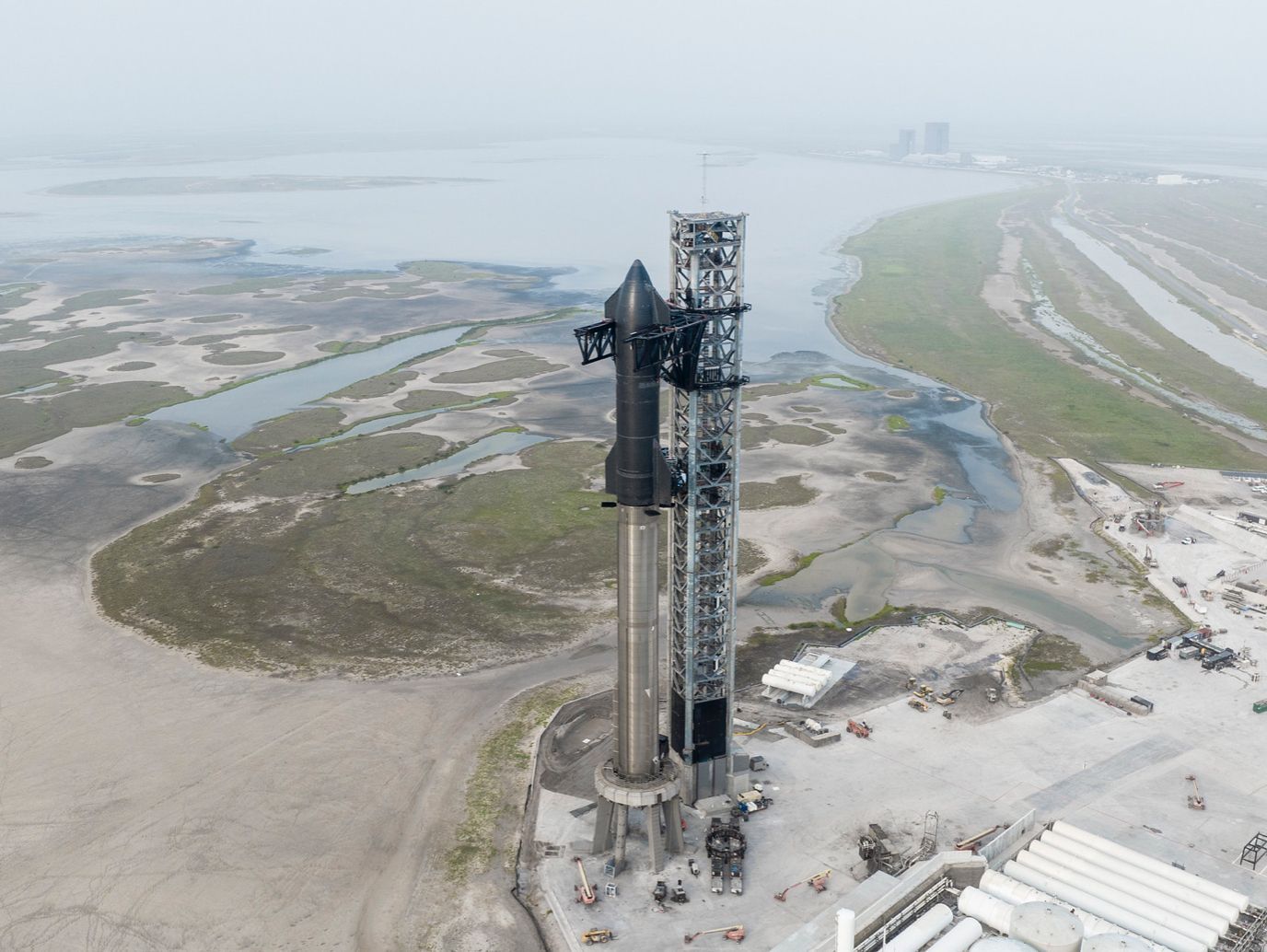
SpaceX's Starship (Image: SpaceX)
Nations race to the Moon, explore potential applications
But perhaps a more pressing, before crew are sent to relay with asteroids, is the matter of lunar exploration. In recent months we have seen several key missions head to the Moon, and there are more to come. These missions are designed for multiple applications, including exploring the potential use of lunar resources.
China’s 2020 Chang’e-5 lunar mission achieved significant milestones for the growing nation, in successfully collecting and returning samples of lunar regolith. The samples were made available to Chinese research institutions, but have now been made available to the international community, perhaps also representing China’s urge to establish more international partnerships in space.
Understanding the makeup of lunar regolith plays a key role in knowing how to utilise local resources on the Moon, and establish a long-term presence. Working towards this aim, this week the US Defense Advanced Research Projects Agency (DARPA) has begun its study to “guide development of integrated lunar infrastructure over the next decade”, according to Space News.
Nations and companies prepare for arrival at the Moon
The drive to be part of our future on the Moon can really be witnessed at this moment in time, with several mission already launched, or due to be launched this year. Commercial lunar lander company, Intuitive Machines (US), announced this week that they have set November 15th as a potential launch date for their IM-1 mission, blasting off from the Kennedy Space Centre atop a Falcon-9. The company could set a milestone of their own, with the chance of becoming the first successful commercial lander mission on the Moon.
Japan will be heading off with their Smart Lander for Investigating Moon (SLIM) mission on August 26th. They aim to land two rovers on the Moon, and use facial recognition technology to automate the landing. The rovers include Lunar Excursion Vehicle 1 (LEV-1), a lunar hopper that will relay data back to Earth, and Lunar Excursion Vehicle 2 (LEV-2), a small 26 x 40 x 30 cm ball-shaped rover, which will carry two cameras.
NASA are also carrying on with their next Artemis launch, which will take astronauts around the Moon and back again, further than any humans have travelled before. This week they began moving the launch tower out for testing, and recently carried out demonstrations on the landing and retrieval of the Orion module.
Also this week, NASA’s Lunar Trailblazer has had its final payload integrated. The Lunar Thermal Mapper was provided by the University of Oxford in England, and will assist in the search for water on the Moon. The orbiter is due to launch in 2024 as part of Intuitive Machine’s IM-2 mission.
All eyes at the moment however are on the Luna-25 and Chandrayaan-3 landing missions sent by Russia and India, respectively. Heading off on July 14th, India mission took a longer trajectory and is due to land on August 23rd. This week the lander separation is due to take place, just 163 km from the Moon. Russia took a far more direct route, and last week entered lunar orbit, and are planning for a landing on Monday, August 21st.
The coming weeks and months are set to be an exciting time for lunar exploration.
Share this article
External Links
This Week
*News articles posted here are not property of ANASDA GmbH and belong to their respected owners. Postings here are external links only.























